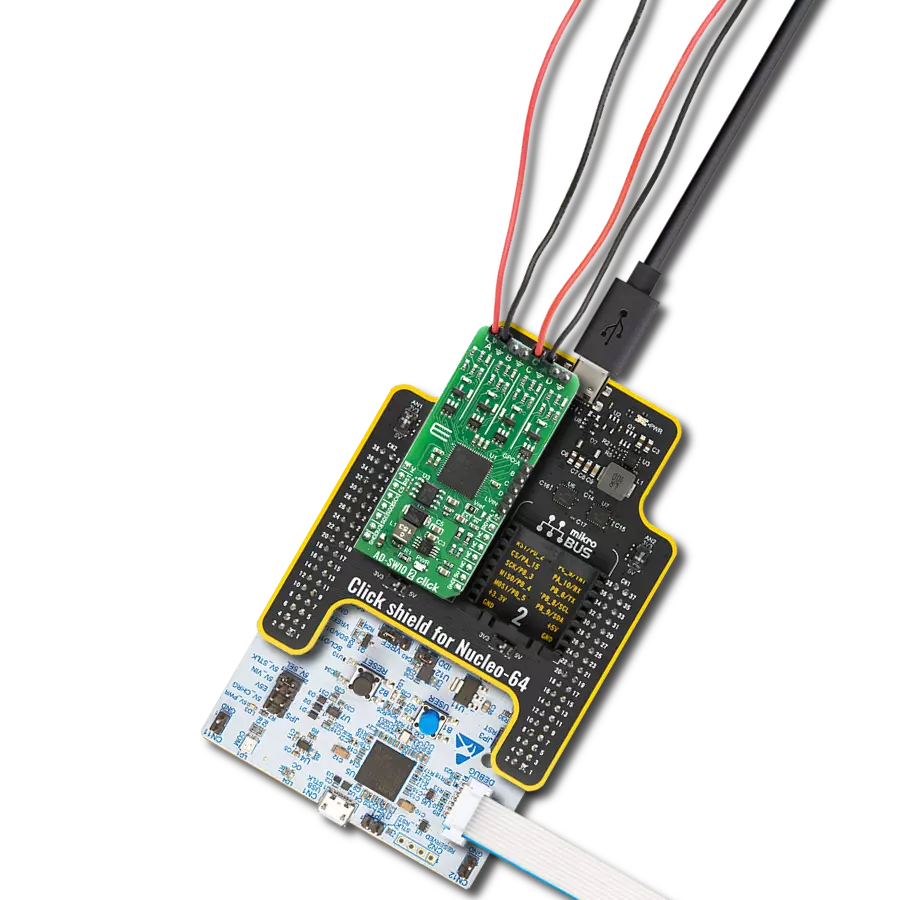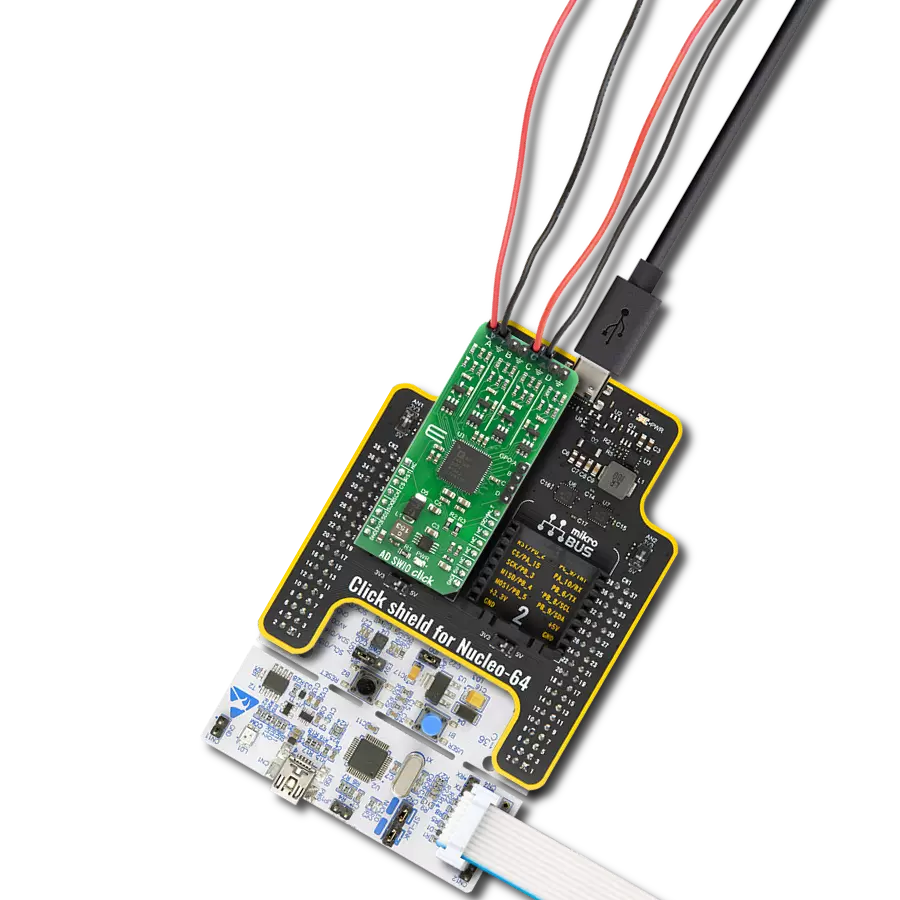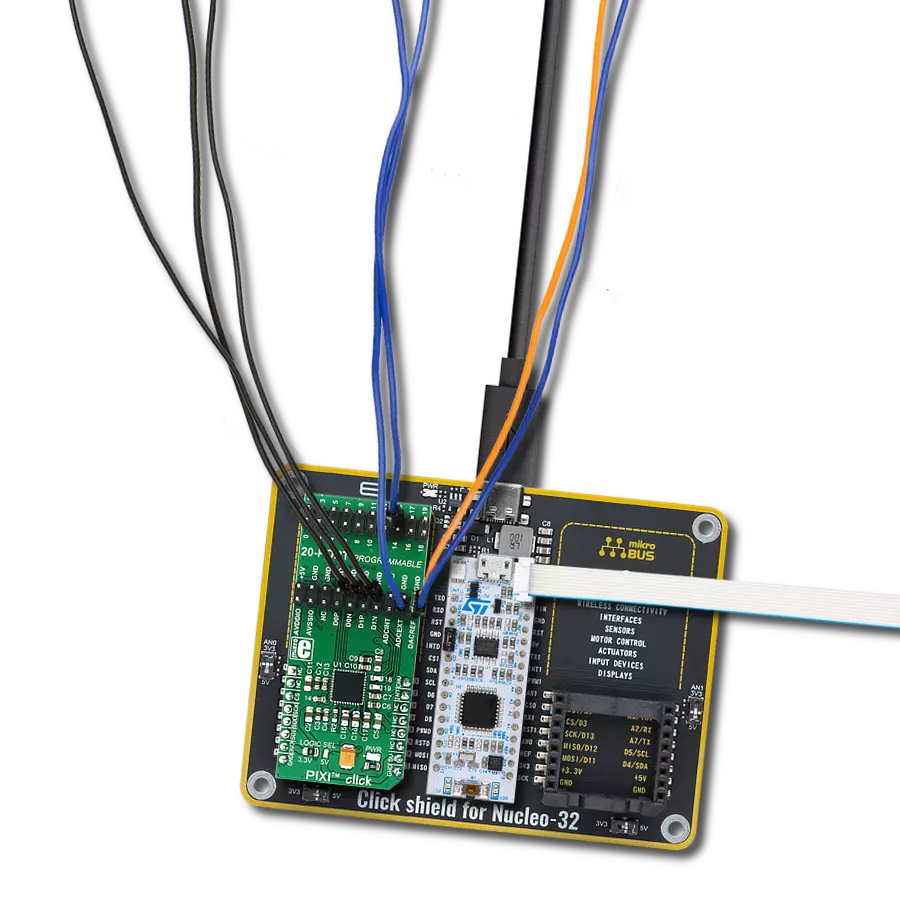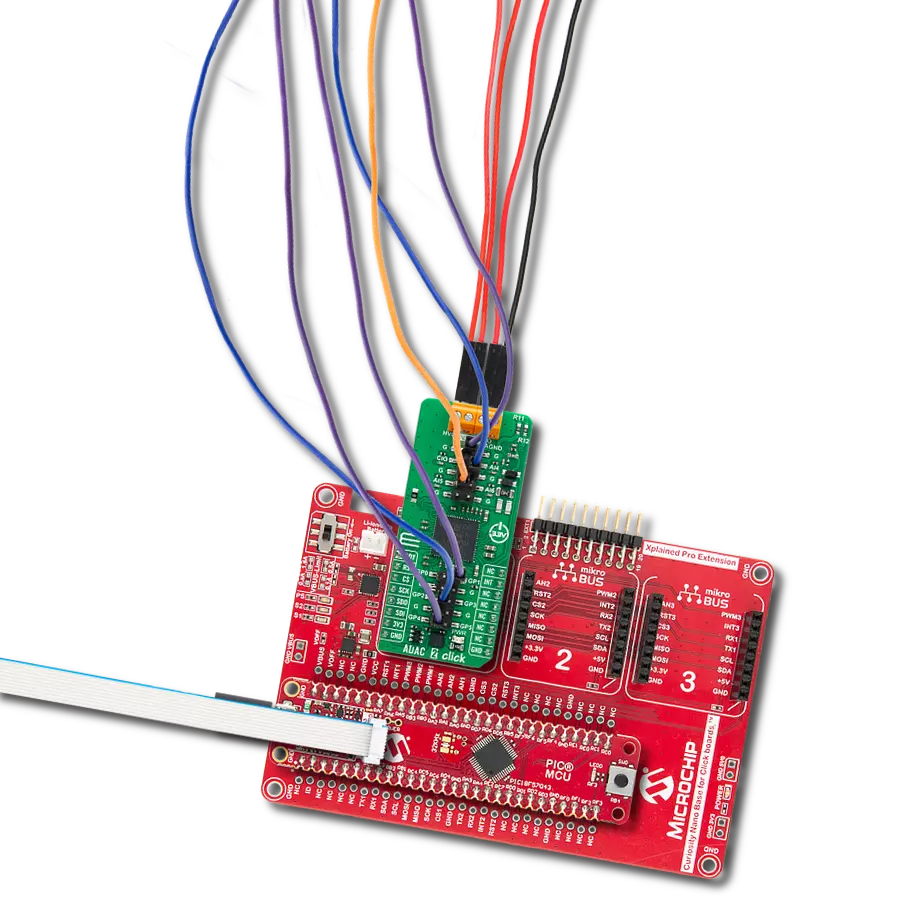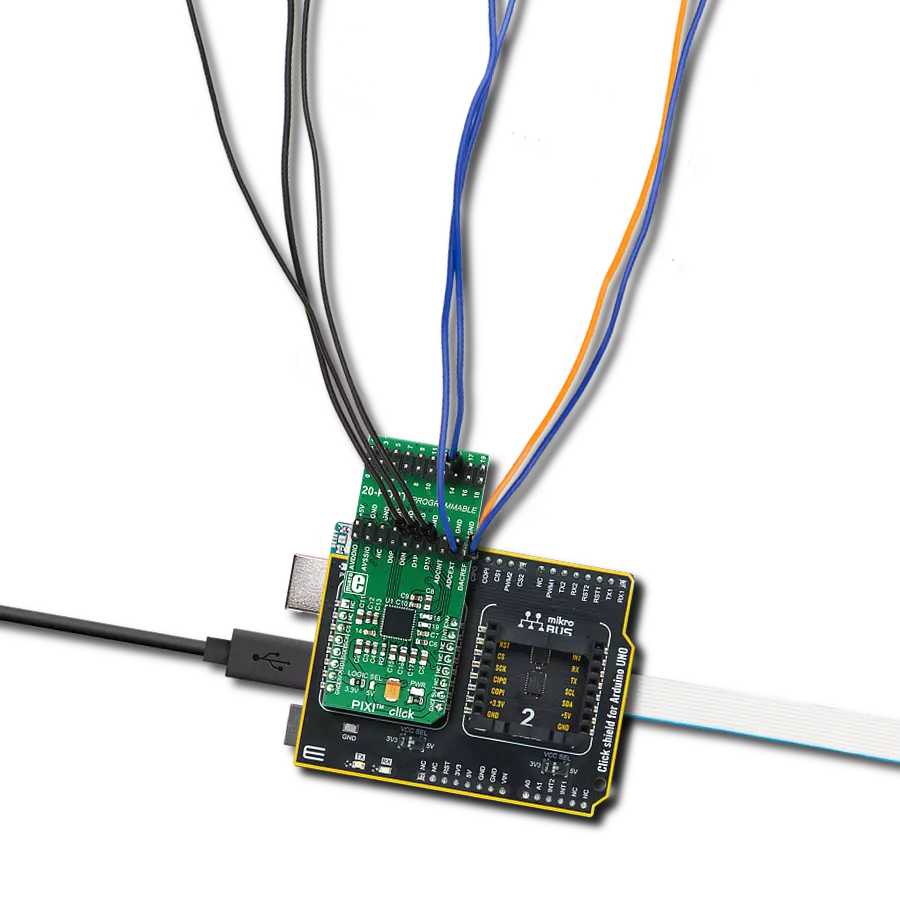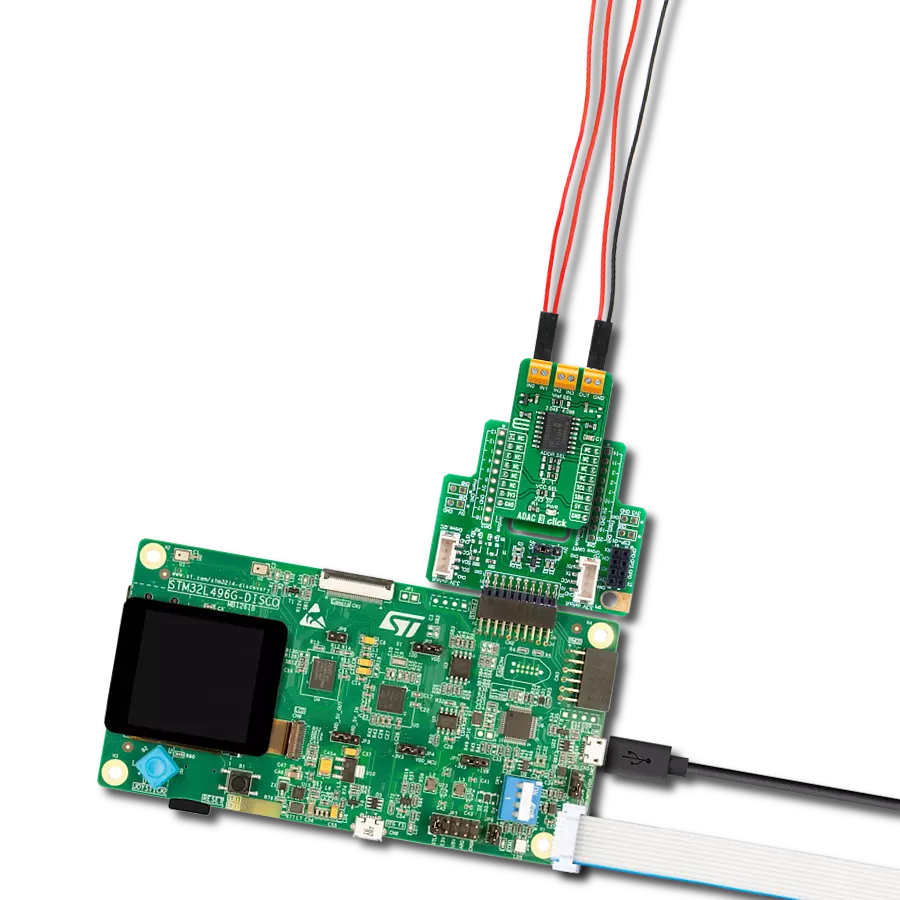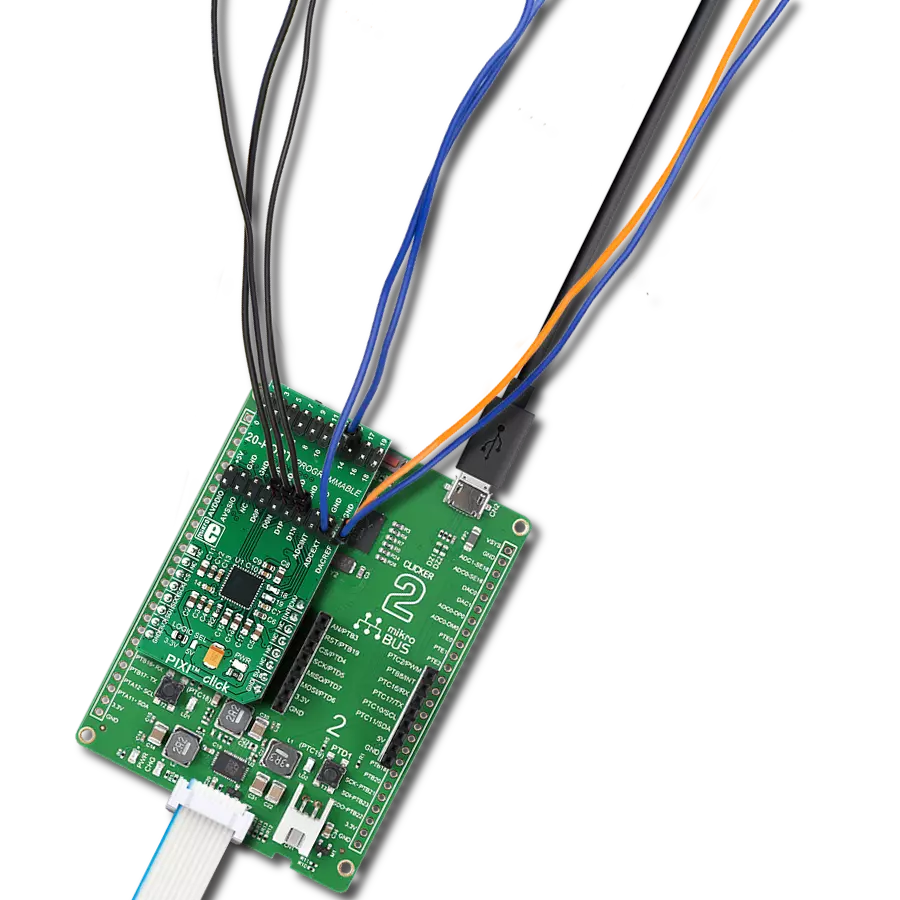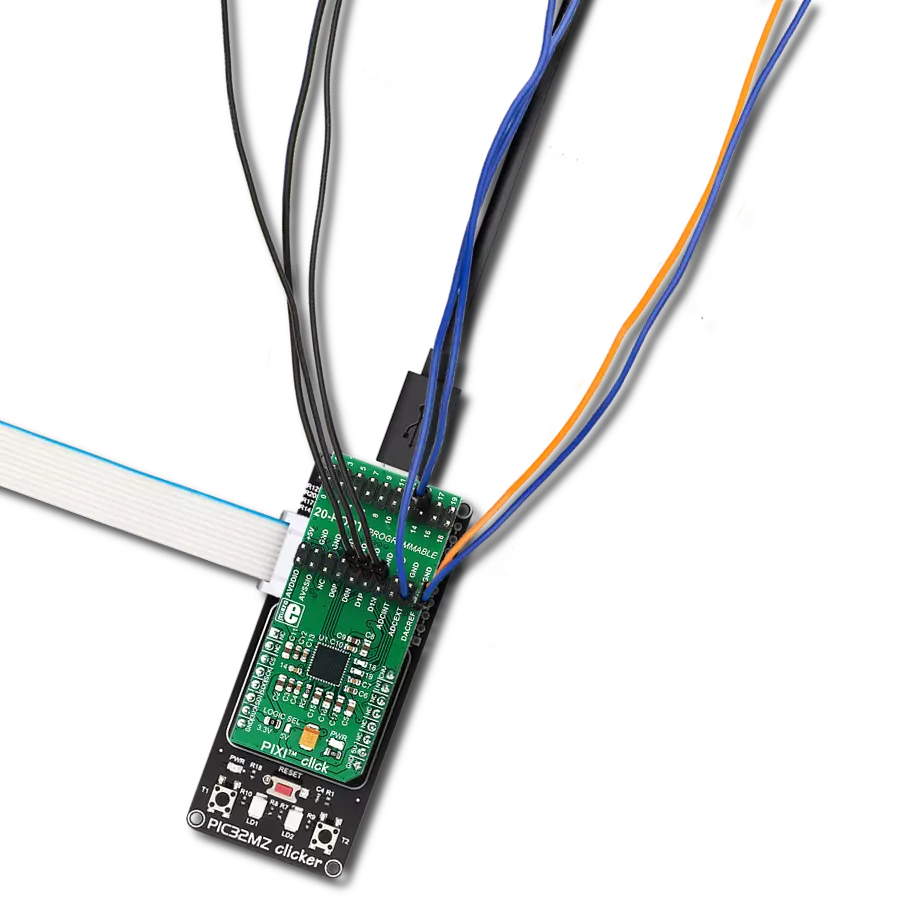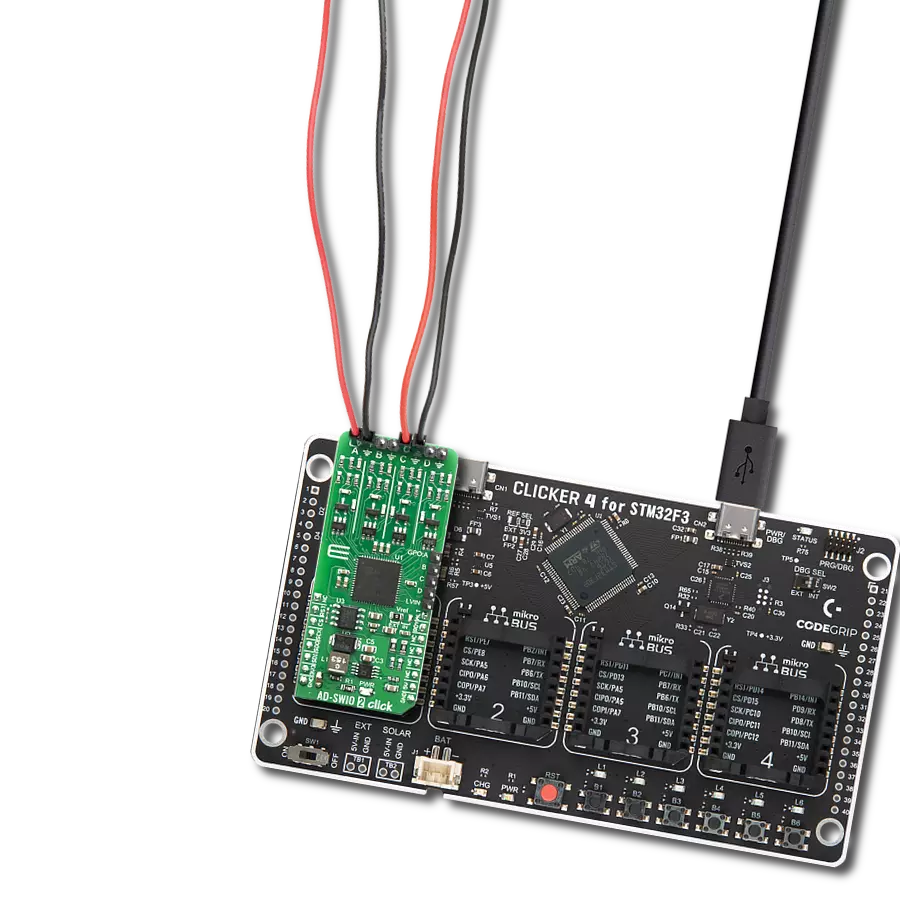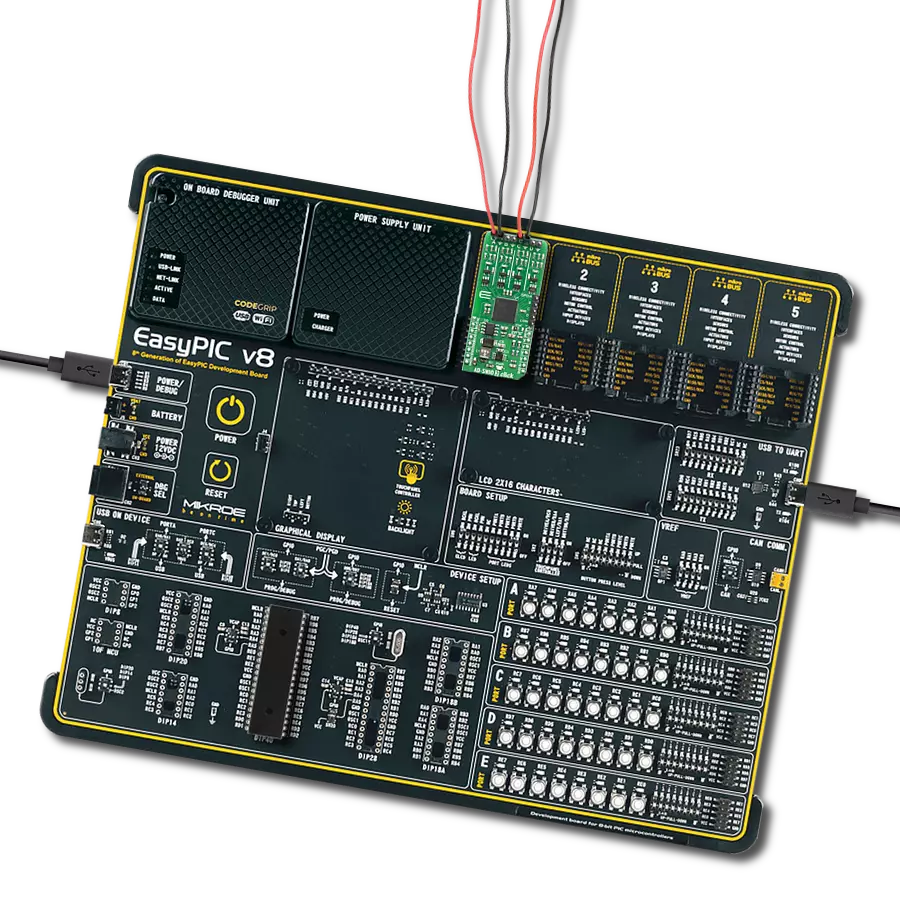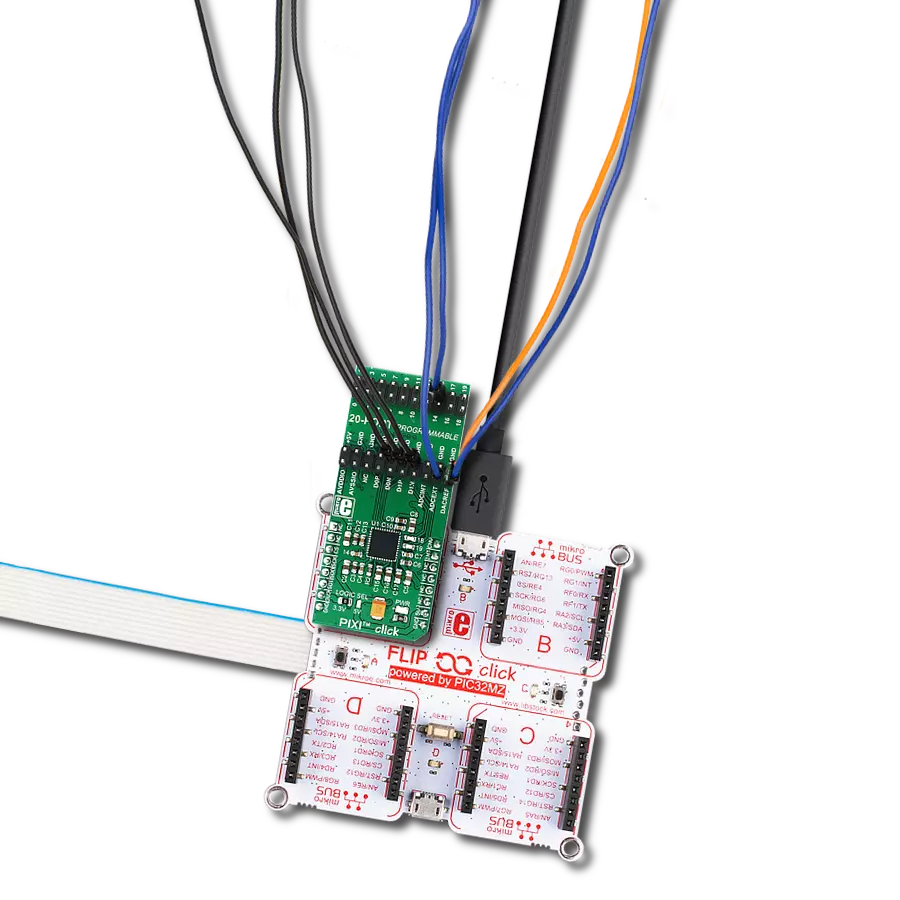The complete package for applications that necessitate combined ADC and DAC operation
A
A
Hardware Overview
How does it work?
ADAC 2 Click is based on the MAX22000, an industrial-grade, software-configurable analog input/output solution from Analog Devices. It provides a high-performance 18-bit DAC in the transmit path and a 24-bit delta-sigma ADC in the receive path. The transmit path (analog output) and the receive path (analog inputs) are entirely independent; thus, they can be programmed for different configurations and modes of operation. Thanks to its outstanding performance and features, this board is designed to support various industrial applications such as programmable logic controllers (PLCs), programmable automation controllers (PACs), and process control applications that require configurable analog I/O. This Click board™ communicates with an MCU through a standard SPI interface for all configuration and management information with a maximum frequency of 20MHz. The MAX22000 provides multiple voltages and current ranges for its inputs and outputs to maintain the best accuracy. It sets the linear range at 105% of the nominal range and the full scale at 125% of the nominal range.
For example, for a ±10V nominal range, the MAX22000 provides a linear range of ±10.5V and a full-scale range of ±12.5V. Other ranges can be achieved by configuring the appropriate registers. The MAX22000 also offers one output marked as CIO, configured as voltage or current output, alongside three analog inputs (AI4, AI5, and AI6) configurable as voltage or current inputs. Besides their use as general-purpose analog inputs, the AI5 and AI6 pins can also be configured as a differential programmable gain amplifier (PGA) for either low-voltage or high-voltage inputs to support RTD and thermocouple measurements. A high-performance filter allows the ADC to provide 50Hz/60Hz normal mode rejection at selected ADC data rates. Current measurement using the AI5 and AI6 pins relies on an external precision resistor to perform the current-to-voltage conversion. A GPIO pin on the additional GPIO header can control an external analog switch to connect or disconnect the current sense resistor electronically for current measurements that do not use a differential sensor.
In addition, several mikroBUS™ pins are used. An active-low reset signal routed on the RST pin of the mikroBUS™ socket activates a hardware reset of the system (all registers go to their power-on default states, analog output goes high impedance, analog inputs power down, and ADC conversion stops) while the INT pin on the mikroBUS™ socket represents a standard interrupt feature providing a user with feedback information. It also has an additional data-ready interrupt marked as RDY and routed on the AN pin of the mikroBUS™ socket, used to signal when a new ADC conversion result is available in the data register. This Click board™ can only be operated with a 3.3V logic voltage level. The board must perform appropriate logic voltage level conversion before using MCUs with different logic levels. However, the Click board™ comes equipped with a library containing functions and an example code that can be used as a reference for further development.
Features overview
Development board
Arduino UNO is a versatile microcontroller board built around the ATmega328P chip. It offers extensive connectivity options for various projects, featuring 14 digital input/output pins, six of which are PWM-capable, along with six analog inputs. Its core components include a 16MHz ceramic resonator, a USB connection, a power jack, an
ICSP header, and a reset button, providing everything necessary to power and program the board. The Uno is ready to go, whether connected to a computer via USB or powered by an AC-to-DC adapter or battery. As the first USB Arduino board, it serves as the benchmark for the Arduino platform, with "Uno" symbolizing its status as the
first in a series. This name choice, meaning "one" in Italian, commemorates the launch of Arduino Software (IDE) 1.0. Initially introduced alongside version 1.0 of the Arduino Software (IDE), the Uno has since become the foundational model for subsequent Arduino releases, embodying the platform's evolution.
Microcontroller Overview
MCU Card / MCU
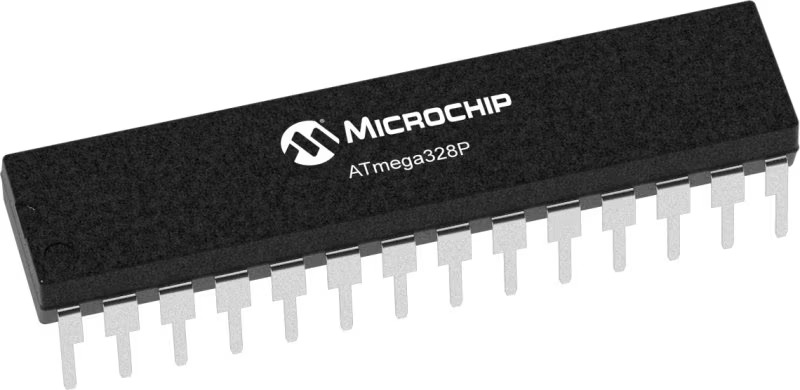
Architecture
AVR
MCU Memory (KB)
32
Silicon Vendor
Microchip
Pin count
28
RAM (Bytes)
2048
You complete me!
Accessories
Click Shield for Arduino UNO has two proprietary mikroBUS™ sockets, allowing all the Click board™ devices to be interfaced with the Arduino UNO board without effort. The Arduino Uno, a microcontroller board based on the ATmega328P, provides an affordable and flexible way for users to try out new concepts and build prototypes with the ATmega328P microcontroller from various combinations of performance, power consumption, and features. The Arduino Uno has 14 digital input/output pins (of which six can be used as PWM outputs), six analog inputs, a 16 MHz ceramic resonator (CSTCE16M0V53-R0), a USB connection, a power jack, an ICSP header, and reset button. Most of the ATmega328P microcontroller pins are brought to the IO pins on the left and right edge of the board, which are then connected to two existing mikroBUS™ sockets. This Click Shield also has several switches that perform functions such as selecting the logic levels of analog signals on mikroBUS™ sockets and selecting logic voltage levels of the mikroBUS™ sockets themselves. Besides, the user is offered the possibility of using any Click board™ with the help of existing bidirectional level-shifting voltage translators, regardless of whether the Click board™ operates at a 3.3V or 5V logic voltage level. Once you connect the Arduino UNO board with our Click Shield for Arduino UNO, you can access hundreds of Click boards™, working with 3.3V or 5V logic voltage levels.
Used MCU Pins
mikroBUS™ mapper
Take a closer look
Click board™ Schematic

Step by step
Project assembly
Track your results in real time
Application Output
1. Application Output - In Debug mode, the 'Application Output' window enables real-time data monitoring, offering direct insight into execution results. Ensure proper data display by configuring the environment correctly using the provided tutorial.

2. UART Terminal - Use the UART Terminal to monitor data transmission via a USB to UART converter, allowing direct communication between the Click board™ and your development system. Configure the baud rate and other serial settings according to your project's requirements to ensure proper functionality. For step-by-step setup instructions, refer to the provided tutorial.

3. Plot Output - The Plot feature offers a powerful way to visualize real-time sensor data, enabling trend analysis, debugging, and comparison of multiple data points. To set it up correctly, follow the provided tutorial, which includes a step-by-step example of using the Plot feature to display Click board™ readings. To use the Plot feature in your code, use the function: plot(*insert_graph_name*, variable_name);. This is a general format, and it is up to the user to replace 'insert_graph_name' with the actual graph name and 'variable_name' with the parameter to be displayed.

Software Support
Library Description
This library contains API for ADAC 2 Click driver.
Key functions:
adac2_set_active_ain_channelThis function sets the active analog input channel.adac2_read_voltageThis function reads the RAW ADC value of the previous conversion and converts it to voltage.adac2_write_dacThis function sets the analog output by writing to the AO_DATA_WR register.
Open Source
Code example
The complete application code and a ready-to-use project are available through the NECTO Studio Package Manager for direct installation in the NECTO Studio. The application code can also be found on the MIKROE GitHub account.
/*!
* @file main.c
* @brief ADAC 2 Click example
*
* # Description
* This example demonstrates the use of ADAC 2 Click board by setting the DAC output (CIO)
* and reading the ADC results from a single-ended channel (AI4) and from a differential
* channel (AI5+, AI6-) as well as toggling all GPIO pins.
*
* The demo application is composed of two sections :
*
* ## Application Init
* Initializes the driver and performs the Click default configuration which enables
* DAC voltage output, sets the analog input mode to single-ended for AI4 and
* differential (AI5+, AI6-), and enables all GPIOs as output.
*
* ## Application Task
* Reads the ADC results from a single-ended (AI4) and a differential (AI5+, AI6-) channels,
* then sets the raw DAC output increasing the value by 10000 after each iteration, and toggles
* all GPIO pins. The results will be displayed on the USB UART approximately once per second.
*
* @author Stefan Filipovic
*
*/
#include "board.h"
#include "log.h"
#include "adac2.h"
static adac2_t adac2;
static log_t logger;
void application_init ( void )
{
log_cfg_t log_cfg; /**< Logger config object. */
adac2_cfg_t adac2_cfg; /**< Click config object. */
/**
* Logger initialization.
* Default baud rate: 115200
* Default log level: LOG_LEVEL_DEBUG
* @note If USB_UART_RX and USB_UART_TX
* are defined as HAL_PIN_NC, you will
* need to define them manually for log to work.
* See @b LOG_MAP_USB_UART macro definition for detailed explanation.
*/
LOG_MAP_USB_UART( log_cfg );
log_init( &logger, &log_cfg );
log_info( &logger, " Application Init " );
// Click initialization.
adac2_cfg_setup( &adac2_cfg );
ADAC2_MAP_MIKROBUS( adac2_cfg, MIKROBUS_1 );
if ( SPI_MASTER_ERROR == adac2_init( &adac2, &adac2_cfg ) )
{
log_error( &logger, " Communication init." );
for ( ; ; );
}
if ( ADAC2_ERROR == adac2_default_cfg ( &adac2 ) )
{
log_error( &logger, " Default configuration." );
for ( ; ; );
}
log_info( &logger, " Application Task " );
}
void application_task ( void )
{
float voltage;
if ( ADAC2_OK == adac2_set_active_ain_channel ( &adac2, ADAC2_CH_AI4_SINGLE_ENDED ) )
{
adac2_start_conversion ( &adac2, ADAC2_DATA_RATE_450_SPS );
// Waits for the availability of the conversion result
while ( adac2_get_rdy_pin ( &adac2 ) );
adac2_stop_conversion ( &adac2 );
if ( ADAC2_OK == adac2_read_voltage ( &adac2, ADAC2_FULL_SCALE_RANGE_12p5V, &voltage ) )
{
log_printf ( &logger, " Channel AI4 single-ended: %.2f V\r\n", voltage );
}
}
if ( ADAC2_OK == adac2_set_active_ain_channel ( &adac2, ADAC2_CH_AI5_AI6_DIFFERENTIAL_25V ) )
{
adac2_start_conversion ( &adac2, ADAC2_DATA_RATE_450_SPS );
// Waits for the availability of the conversion result
while ( adac2_get_rdy_pin ( &adac2 ) );
adac2_stop_conversion ( &adac2 );
if ( ADAC2_OK == adac2_read_voltage ( &adac2, ADAC2_FULL_SCALE_RANGE_25V, &voltage ) )
{
log_printf ( &logger, " Channel AI5-AI6 differential: %.2f V\r\n", voltage );
}
}
static int32_t dac = ADAC2_DAC_MIN_VALUE;
if ( ADAC2_OK == adac2_write_dac ( &adac2, dac ) )
{
log_printf ( &logger, " DAC: %ld\r\n", dac );
dac += 5000;
if ( dac > ADAC2_DAC_MAX_VALUE )
{
dac = ADAC2_DAC_MIN_VALUE;
}
}
uint32_t gpio_data;
if ( ADAC2_OK == adac2_read_register ( &adac2, ADAC2_REG_GEN_GPIO_CTRL, &gpio_data ) )
{
gpio_data ^= ADAC2_GPIO_ALL_MASK;
if ( ADAC2_OK == adac2_write_register ( &adac2, ADAC2_REG_GEN_GPIO_CTRL, gpio_data ) )
{
log_printf ( &logger, " GPIO: 0x%.2X\r\n\n", ( uint16_t ) ( gpio_data & ADAC2_GPIO_ALL_MASK ) );
}
}
Delay_ms ( 1000 );
}
int main ( void )
{
/* Do not remove this line or clock might not be set correctly. */
#ifdef PREINIT_SUPPORTED
preinit();
#endif
application_init( );
for ( ; ; )
{
application_task( );
}
return 0;
}
// ------------------------------------------------------------------------ END
Additional Support
Resources
Category:ADC-DAC




















